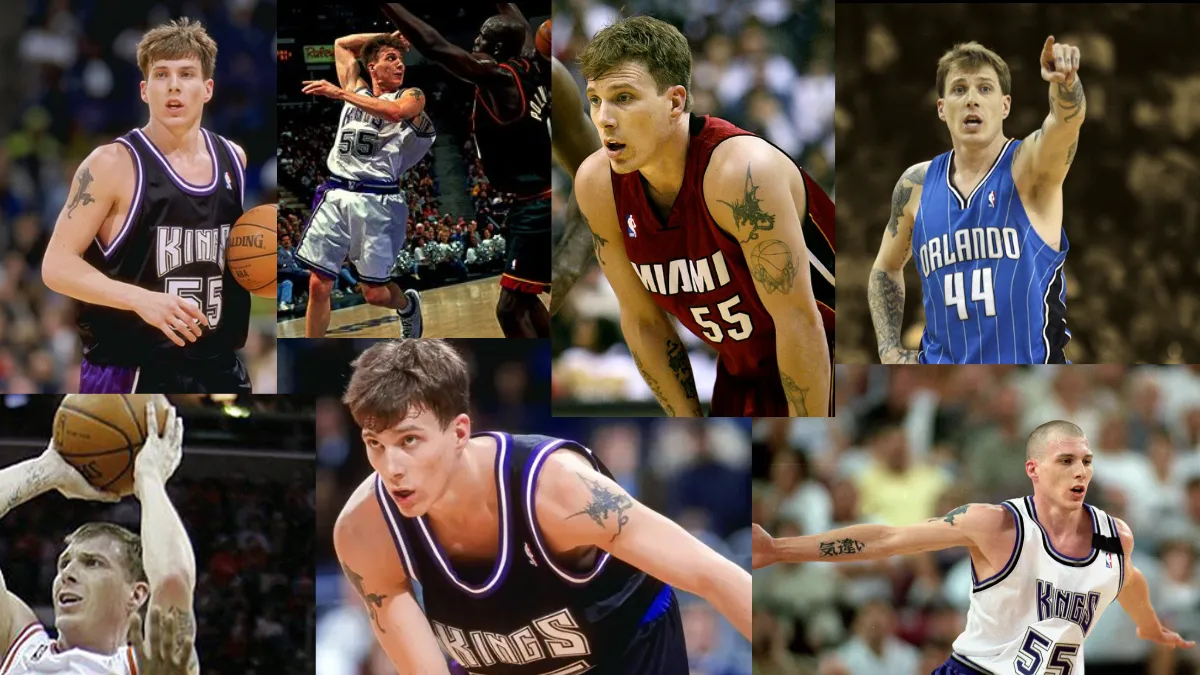NBA’s Talent Revolution in 2025 — Jason Williams Explains Why Today’s League Is on Another Level
If you’ve watched as many highlight reels as Jason Williams—better known to fans as “White Chocolate”—you know his style brought electricity to the game in the late 1990s and early 2000s. Yet, as he openly admits today, “the NBA has much more talent now,” and this statement sparks a fresh debate and invites new questions: What changed? How deep does the talent run? And how is this affecting the identity and competition level of the sport?
Beyond the Stars — How Talent Depth Became the NBA’s Calling Card
Not Just Top Players — The Bench Revolution
In the past, the NBA spotlight was reserved for superstars. Magic, MJ, and Kobe could single-handedly tilt games. Today, the league offers a much broader base of talent, with bench players who can torch a defense and deep rotations even on teams that sit below .500. As one Reddit commentator puts it, “there are guys not seeing the floor who could be above average starters in the right situation”.
The reason? Better training, global scouting, analytics, and sports science elevate not just the elite but the average pro. “Current NBA players, especially rookies, are much better ball handlers and shooters compared to past generations,” argues a fan survey.
The International Surge
Gone are the days when only American players dominated the hardwood. Now, international imports like Victor Wembanyama, Luka Dončić, Giannis Antetokounmpo, and Shai Gilgeous-Alexander sit at the top of the league. Williams himself points out, “The stars now are bigger than stars when I played.” This is not just literal—in terms of height and reach—but their global brand and in-game versatility break old molds.
Positionless Basketball — The New Normal
Positionless play is now the rule, not the exception. Centers shoot threes, guards rebound, and everyone can switch on defense. Teams like the Mavericks (with Cooper Flagg) and Spurs (with Wemby and Harper) draft for versatile skills over strict position. As Williams sees it, “the game is faster, defenses have to react to shooters coming from anywhere, and coaches get creative with rotations”.
Talent by the Numbers — Modern Metrics and the Analytics Boom
Advanced stats prove what the eye test suggests. According to recent analyses:
The average Win Shares/48 and Box Plus-Minus for the top 150 players has risen steadily since 2005.
Estimated Plus-Minus reveals that contemporary “role players” often match or beat prime starters from 20 years ago.
Modern NBA teams feature more players hitting elite shooting and efficiency benchmarks than ever before.
In fact, parity is at a historic high: Seven different franchises have claimed titles in the past seven years—a level of competition not seen since the 1970s.
How Training, Medicine, and Data Changed the NBA Forever
The Science of Player Development
NBA teams now hire sleep coaches, biometric analysts, and nutritionists. Player tracking systems monitor everything from steps taken on court to recovery rates. Williams notes, “Today’s players have resources we never dreamed of—this is why the league looks different every night.”
Longer Careers, Fewer Devastating Injuries
In the 80s and 90s, legends like Larry Bird, Magic Johnson, and Isiah Thomas saw their primes chopped short by injury or illness. Modern medicine keeps LeBron, KD, and Steph playing into their late 30s and beyond.
Fresh, Untapped Angles — Insights Most Articles Miss
1. The Effects of Global Youth Leagues and Social Media
Training culture is now international. Teenage prospects appear on viral highlight reels, train at NBA camps on five continents, and learn ball-handling and shooting from YouTube. Jason Williams himself has commented, “Kids everywhere want handle like Kyrie or Lamelo…there’s so much knowledge out there now”.
2. Expansion and Talent Distribution
There’s a tangible push for the NBA to expand again. With so many skilled players, cities like Seattle and Las Vegas could field competitive squads without diluting league value—a marked difference from previous periods where expansion led to weaker teams.
3. Parity and Hyper-Fluid Rosters
Teams turn over rosters quickly. As a result, winning deep into the playoffs demands more than stars—you need talented role players and adaptable coaching. Jason Williams notes the bench impact and changing player archetypes: “Everybody in the locker room can play. You never know who’s going to pop next”.
Jason Williams—From “White Chocolate” to Wise Analyst
Williams was known for his electrifying creativity—elbow passes, playground moves, and jaw-dropping improvisations. Yet, he humbly explains, “Today’s game has exceeded our skill level; guys make passes and shots we used to call risky, now they’re routine”. His perspective is echoed in modern highlight shows—a tribute to the league’s ongoing innovation.
Fan and Expert Voices — Is This the Best-Ever NBA?
Many old-school fans hesitate, arguing that the NBA’s pace and three-point obsession skew stats. Contemporary players like Kevin Durant insist, “we’re at the peak of basketball—what these guys do every night is ridiculous”. Data backs this up: talent is distributed more evenly, and the quality of play is at an all-time high.
What’s Next for the NBA Talent Boom?
Expect continued league parity and new stars to emerge from unexpected backgrounds.
International prospects will strengthen the talent base—watch for African, Asian, and European leagues producing NBA-ready athletes.
Expanding teams will allow hidden gems to shine, and analytics will keep evolving to guide coaching decisions.
FAQ — Answering Long-Tail NBA Talent Questions
Q1: Is the NBA more talented now than in the 1990s or 2000s?
Yes. Average player skills, depth, and international presence are far ahead of prior decades, per advanced metrics and expert opinion.
Q2: How much does global scouting impact the league today?
International stars fill All-NBA teams and MVP finalist lists every year. Teams now scout globally for both youth and veteran talent.
Q3: Why are so many teams winning titles now?
Higher talent parity and deeper rosters let more franchises compete for championships. The seven-champ-in-seven-years streak underscores this trend.
Q4: What gaps exist in the NBA’s talent pool?
Older critics note a loss in “old-school” physical play, but overall skill and versatility are at an all-time high, suggesting a more complete league.
Q5: Could NBA expansion dilute talent?
Not as much as critics fear; with more ready-to-play prospects, the league is well positioned for growth

Sam, a dedicated blogger, has immersed himself in the world of content creation for the past five years. His journey reflects a profound passion for storytelling and insightful commentary. Beyond the digital realm, Sam is a devoted NBA enthusiast, seamlessly blending his love for sports with his writing pursuits.

